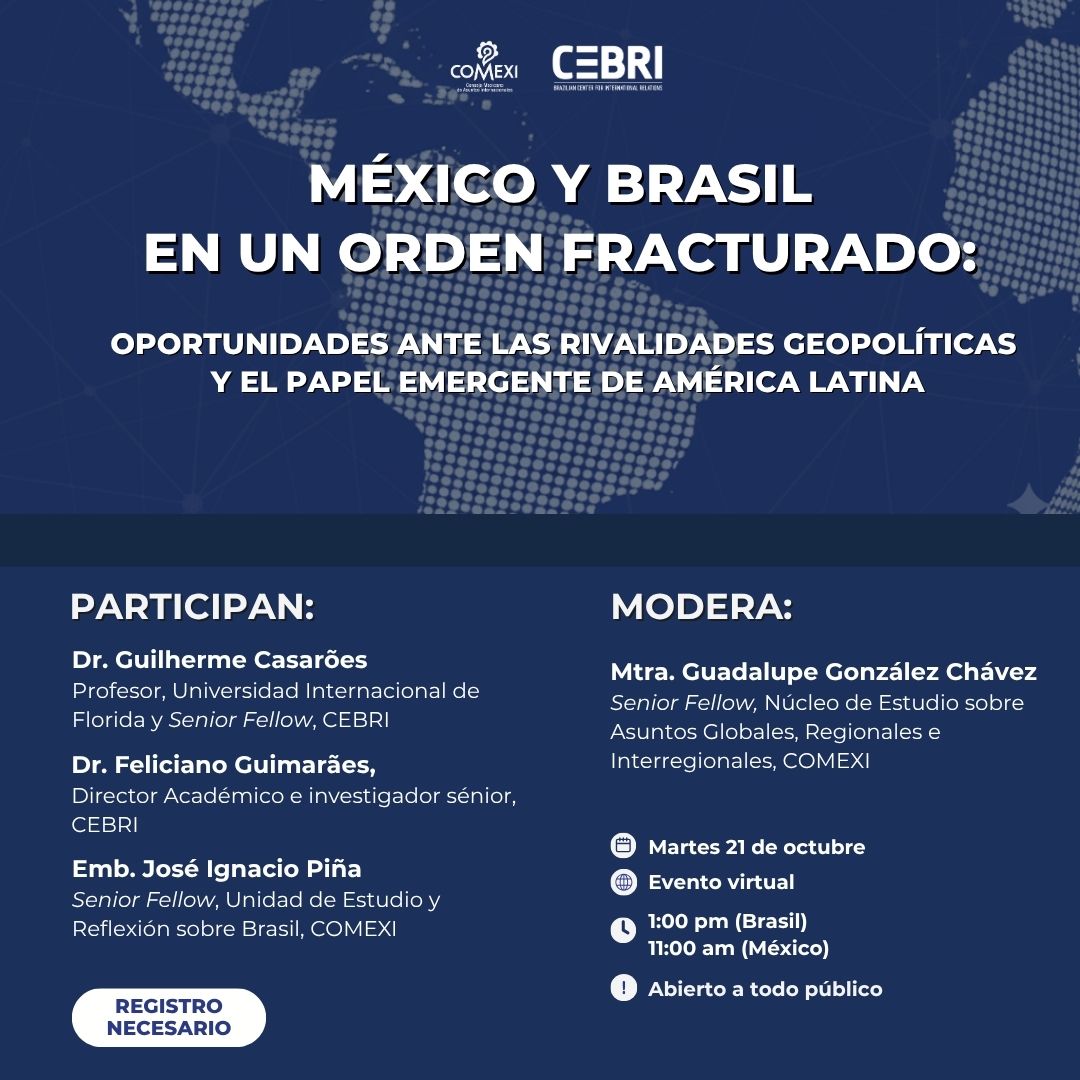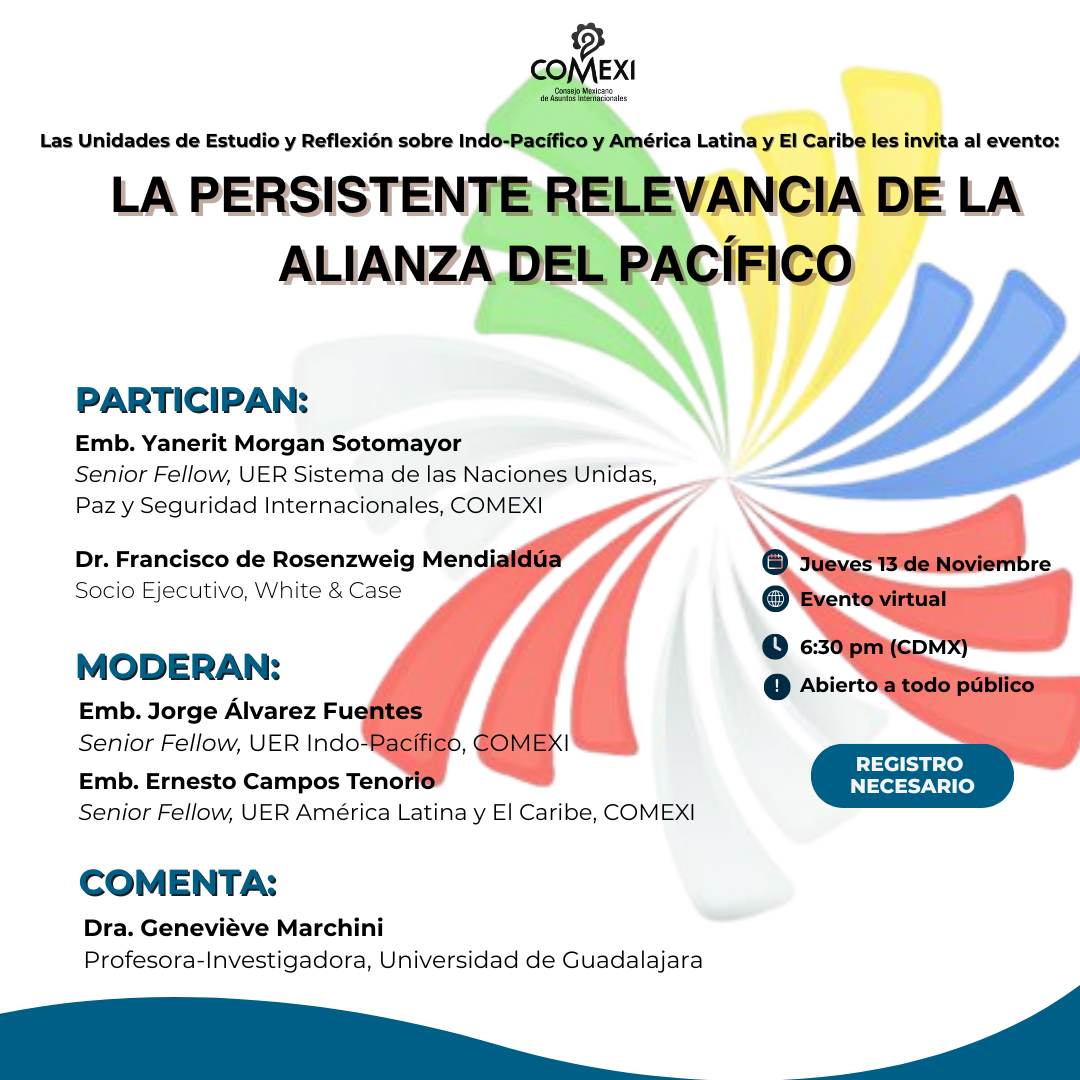On October 16th the Mexican Council of Foreign Relations (COMEXI) featured David Hone, Chief Climate Change Advisor at Shell, presenting the Sky Scenario: a technically feasible pathway for society to achieve the Paris Agreement goals. The conversation regarded sustainability goals and the main environmental challenges for the future.
David Hone starts by presenting Shell’s Sky Scenario, which looks at how one might meet the goals of the Paris Agreement. This is challenging because of how long the world has known the climate issues and yet so little has happened in terms of addressing it. He explains that since 1911, around the same time that Mexico began to export its crude oil, articles about the rising temperatures in the planet due to high consumption of coal were being published.
He continues to clarify that fossil fuels represent 80% of the energy the world extracts. Furthermore, Mexico has a higher dependence on hydrocarbons, with 90% of its energy being nonrenewable. This is consequential of its heavy industrial economy, which uses most of the resources. Hone points out that Mexico, in addition to industry, consumes in vehicles, aviation and residential needs, which found themselves at a crossroads back in 2015 with the Paris Agreement.
The goals of the Paris Agreement are 1) holding the increase of temperature below the 2°C and aspire to 1.5°C of limiting warming; 2) reach a peak of greenhouse gases as soon as possible; 3) achieve a balance between anthropogenic emissions by sources removals by sinks of greenhouse gases in the second half of this century. The third one, explains Hone, is the mechanism by which the first goal is reached. The Agreement uses a mechanism of Nationally Determined Contributions, which are the approaches to reduce the countries’ emissions without sacrificing their economy, reviewed every five years.
This means that even though the world can reduce fossil fuel dependency, some its uses cannot be replaced; therefore, it must reach a point called net zero emissions where any remaining emissions are balanced with the removal of carbon dioxide from the atmosphere. This happens when there is no additional CO2 being discharged. A scenario, that will be possible by 2070. It is important to remember that the net zero emissions will happen, but the real question is when it will happen.
David Hone explains that Sky Scenario rests on a sequence of events. The first one considers the coming together of industries, corporations, governments and also technology in order to reach the net zero emissions faster. This means that, during the 2020’s decade, countries will try to close the gap of emissions that developed and developing countries have. The Sky Scenario also requires six big changes in energy systems, achieved by planning government policy: a) carbon pricing; b) energy efficiency; c) electrification; d) growing new energy systems; e) carbon capture and storage and f) ending deforestation. Each is very ambitious.
First, the carbon pricing involves government policy, with complete coverage in a range of USD $40 per ton of CO2. It has to rise constantly to reach the USD $200 per ton of CO2 in the Sky Scenario. It needs government action without delays. Second, energy efficiency helps limit overall demand growth in order to allow the new energy systems to catch up. Third, the use of electricity for energy, which reduces emissions and manages them only by the generation process; although it has been relatively slow with a 2% increase per decade (it has to be quadruple that increase for the Mexican economy in the 2020’s). Also, new goods such as electric cars and other machinery that do not emit so much carbon, has to adapt to big vehicles such as trucks. Not only in the car, but in how it is manufactured will affect the Sky Scenario. The fourth change is recognizing the growing energy systems that do not emit as much CO2 as fossil fuels. It means that fossil fuels will peak and decline as renewables rise, changing the dynamic.
The fifth step is the combination of capturing CO2 in the generation of energy with negative emissions and the use of energy. It is a balance when fossil fuels are reduced and the CO2 captured by the industries, substituted by clean energies. Hone describes that Mexico will reach the net zero emissions by 2050. Finally, step six seeks to change the use of land, as well as reforestation to mitigate CO2 emissions. For Mexico to achieve this change it needs to apply the Article 6 of the Paris Agreement, because to develop a vibrant “sink” export market (selling things to countries as carbon units that still have significant emissions) it will need to form alliances with low emitting countries and buy their exceeding allowance of CO2 emissions.
Hone then proceeds to explain that as the world and Mexico change their energy dynamics, so Shell will adapt to such changes. He predicts that the CO2 emissions of the company can be reduced by 50% in the transition time, which means that by 2050 it should be a very different company. He concludes that the Sky Scenario can also be achieved by Shell following the described steps.
After he finishes, Carlos Mena begins the discussion by asking how likely the Sky Scenario is, to which Hones explains that there are different sectors to consider: The industrial and economic capacity exists, as well as the technology and the policies are well understood. The likelihood is based on the sociological and political determination to do so. But it also depends on how regions and countries implement such low carbon policies.
The next question asked to Hone is what are the limits and new considerations that will surge when the world works towards the Sky Scenario, specially with the storage of electricity? He answers that, even though the demand of electricity will rise, countries are developing new technologies, with the cost of battery technology declining. In the terms of the grid, it will require pump hydraulic storage and longer transmission routes, with great examples such as China and its solar industry. Nonetheless, these would need to tackle political issues, more than economic and technological ones, eliminating the insecurities and isolation of energy security seen today.
A member of the audience then asks how the Sky Scenario adapts to changing projections, because as the Earth heats up, the energy demand will increase (both for personal and industrial air conditioning) which use other byproducts of oil and natural gas. To which Hones retorts that indeed emissions and the use of fossils is rising, but it will eventually fall with the use of renewable energies. He adds that there are 2 key aspects that will happen in the use of electricity and that the Sky Scenario considers. The first one is that industries increase their electrification and amplify their grids more and more for the production lines. Second the steel sector is looking for hydrogen and other new methods for their industry, so the usage of fossils is declining.
The final question is related to policy: American and Mexican renewable energy policies are practically non-existent, with both administrations investing and wasting resources in fossil fuels. In this context, how does the Sky Scenario’s cost change when governments stall actions to mitigate climate change and the usage of fossil fuels? The real cost, explains Hones, is ultimately in the climate outcome, a cost that everyone pays. If governments do apply actions towards the Sky Scenario the cost will be less, but not only administrations need to do so, entrepreneurs, companies and particulars have to work towards this goal. But it is possible.
Elaborado por Alejandro Hernández Buen Abad






